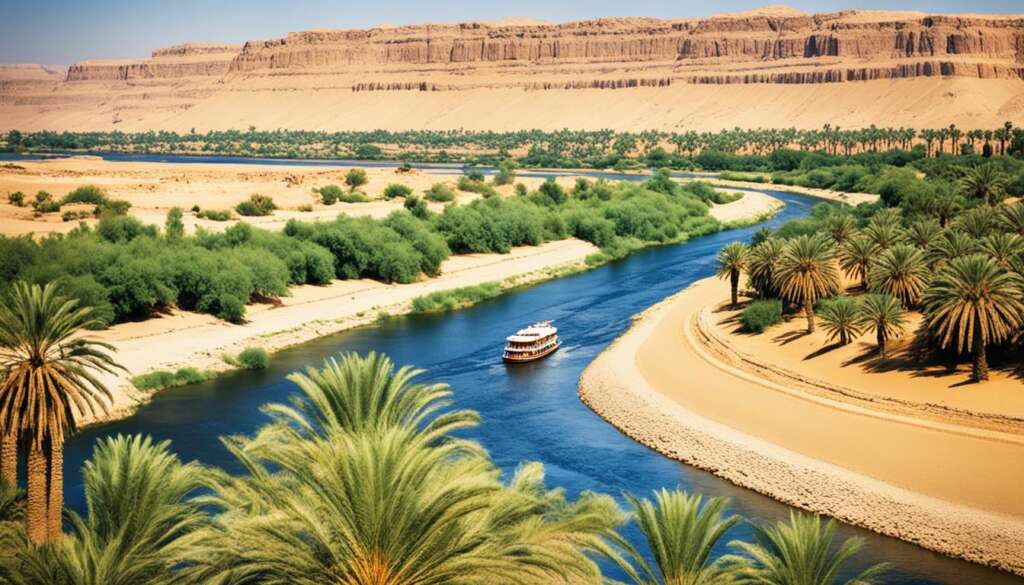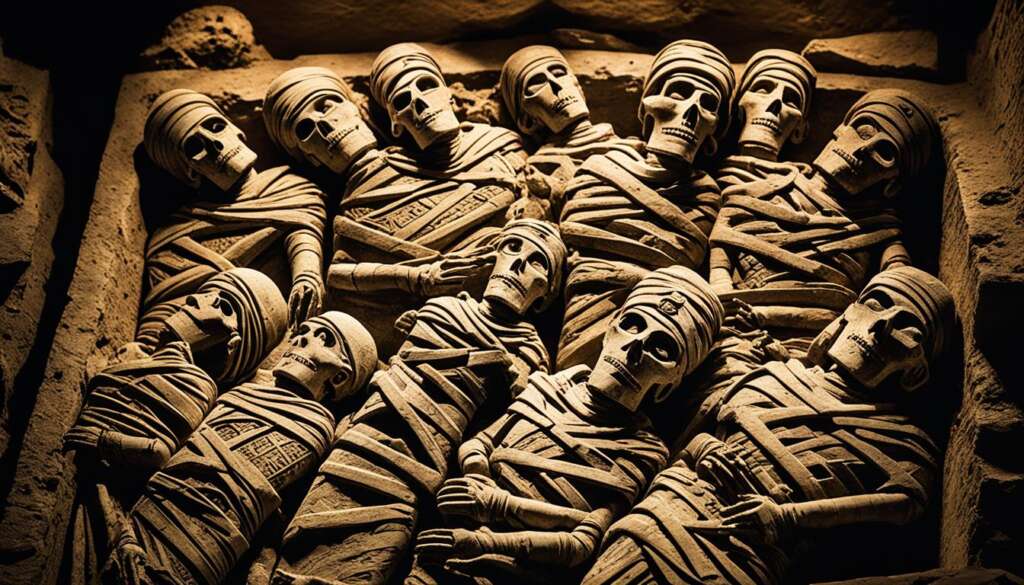Discover Ancient Wonders: Explore Egypt’s Treasures
Egypt is rich in wonderful treasures of that world Egypt’s treasures. These artifacts; monuments and tombs give history of a past culture. If the latter is your goal, Egypt is filled to the brim with tourists attractions in the historical domain. Now let us look at some of the features that make Egypt’s Treasures so interesting.
The Pyramids of Giza: Timeless Wonders
The pyramids of Giza might arguably rank among the most popular of the Egyptian artifacts. Such large buildings have been in existence for over four millennia. They were erected for the purpose of acting as burial chambers for Pharaohs of the ancient kingdom of Egypt. Touring through the Pyramids allows the visitor to get an idea of the engineering needed back throughout the times of Egypt.
The Great Sphinx: A Mysterious Guardian
There other remarkable treasures which includes the Great Sphinx of Giza. This statue represents a large animal with the body of a lion, and the head of an Egyptian king. It is a sign of power and secrecy. Being close to the Sphinx is one of the feats anyone visiting Egypt’s Treasures should relish.
Luxor: Egypt’s Open-Air Museum
Thus, Luxor is called the largest outdoor museum in the world. Krro occupies several of the treasures of Egypt, such as the famous Karnak temple. Infact alongside the rocky walls of the river side lies the Valley of the Kings that houses tombs of powerful Pharaohs. Luxor is a perfect place for anyone who wants to have the experience of recognizing the face of ancient Egypt.
The Valley of the Kings: Burial Grounds of Pharaohs
Some of Egyptian treasure is stored in the Valley of the Kings. Some of the great Pharaohs are buried in here, the tombs for the dead and a cursed place according to popular belief. These are graves identified with attractive painting and sculptures. Visiting the tombs, located in the Valley of the Kings let you know about some of the beliefs of the ancient civilization that was Egypt.
Abu Simbel: Pharaoh Ramses II’s Legacy
Abu Simbel is also one of the most interesting and must visit sites among all Egypt’s Treasures. These massive structures are rock temples hewn into the side of a continuing mountain by King Ramses 11. They are oriented in the east to west direction, and the structure as well as the construction of the temples is in perfect harmony with sun. Visiting Abu Simbel is indeed a good opportunity to touch the great history and construction of Egypt.
Pyramids at Giza
| Pyramid | Height (feet) | Height (meters) | Pharaoh |
|---|---|---|---|
| Great Pyramid (Pyramid of Khufu) | 455 | 139 | Pharaoh Khufu |
| Pyramid of Khafre | 448 | 136 | Pharaoh Khafre |
| Pyramid of Menkaure | 204 | 62 | Pharaoh Menkaure |

The Egyptian Museum: A World of Artifacts
For a closer consideration of Egypt’s Treasures, visitors should head to the Egyptian Museum in Cairo. It holds a number of relics from the old kingdom of Egypt. One of the main attractions of the museum is the gold treasures of Tutankhamun king. It is quite fascinating to apprehend these objects in the actual that develops a physical association to the Egyptian history.
The Nile River: The Lifeblood of Egypt
For Egypt Destination, Nile River plays an essential role in Egypt Treasure and Egypt history. From which it derived water resources, transport means and fertile land for the ancient civilization. Virtually all the significant antiquity in Egypt lies along this river that has been central in shaping Egyptian history. It is also advisable to get to these treasures via a Nile cruise since it affords a nice glimpse of the river.
Red Sea: Egypt’s Latest Jewel of the New Age
Yes, Egypt’s Treasures has its basis in history, but modern Egypt also presents spectacular opportunities. The coastline on the Red Sea contains several beaches and sea reefs. Some of its coastal resorts, such as Sharm El Sheikh and Hurghada, are now real mecca for divers and those who want to relax. This modern treasure fits perfectly into Egypt’s already historical sites.
The Temples of Karnak: Egypt’s Spiritual Legacy
The other treasure of Egypt is the Temple of Karnak which bears evidence with its monuments of Egyptian religious fanaticism. It is found in Luxor and it comprises of one large structure that comprises of large halls and large columns. The temple is that of the gods of Thebes and is recognized as one of the biggest religious centers on the planet. Visiting Karnak helps you appreciate more the spiritual dimension of Egypt as well as intensify one’s appreciate for Great Architecture.
Temple of Hatshepsut: A Female Pharaoh’s Monument
The Temple of Hatshepsut is another key among Egypt’s Treasures.. Carved out of the cliffs, this temple is for one of few female Pharaohs – Hatshepsut. It is beautiful and has crockery with narrations of the period that Hatshepsut ruled over Egypt. They get to see that Egypt was once ruled by powerful women through a visit to this site.
The Tomb of Tutankhamun: A Glimpse Into Royal Life
the Tomb of Tutankhamun in the Valley of the king is one of the most important of Egypt’s treasures. Found in 1922 this tomb contained all of the artifacts that tell much about the life of the young Pharaoh. The golden mask of dashboard ‘Tutankhamun’ is one of the master pieces in Egypt. Touring the tomb provides one with an almost experience of the famous and enigmatic King of Egypt.
Philae Temple: A Tribute to the Goddess Isis
Other wonder of Egypt is Philae Temple which is built on the island in Nile! It was a temple of goddess Isis and was an active cult place in the Ptolemaic times. Due to this, it was the richness in architectural detailing and magnificent location with waters of the Nile impending the area. Philae is one of the most spiritual and calming place to be visited in Egypt, during the trip.
Saqqara: The Step Pyramid at a Glance
Saqqara is one of the oldest pyramids in Egypt rich in archeological discovery; it has the Step Pyramid of Djoser. This pyramid is one of the treasures of Egypt and is an architectural innovation. Constructed during the Third Dynasty, it is the first step toward pyramid building. Going to EL-Saqqara transport you right back to the early days of one of the most beautiful civilization on earth.
Alexandria: A City of Ancient Wonders
Alexandria is a coastal city with a long and glorious past and is now one of the most important of Egypt’s treasures. With historical records linking it to More declined city founded by Alexander the Great that once accommodated the Great Library and the Lighthouse of Alexandria. Today one can see remnants of these early wonders, as well as fascinating museums, and a picturesque Mediterranean shoreline. Alexandria is a city that has a good combination of the historical background, cultural attractions, and some sea side features.
Mummification Museum: Unveiling Egypt’s Secrets
Among the attractions of Cairo, the Mummification Museum introduces one of Egypt’s Treasures – the tradition of burials. Personal, and collective collections include mummies, coffins, and burial material of the Egypt dynastic period. Knowledge about the preservation process assists the learner in relating to the Egyptian perception of life, and the life after death. Pictorial: Its a wonderful event that enriches you with Information about the old kingdom of Egypt.
Mount Sinai: Sacred Ground of Egypt
As for those who seek for something divine, Mount Sinai also the precious piece among Egypt’s treasures. It is recognized as the site that Moses received the Ten Commandments from God. People willingly climb to the top just to get the views and get a feeling of the sacredness of the place. Climbing Mount Sinai make it possible for one to feel more of Egypt religious and historical site.
The Citadel of Saladin: Medieval Egypt’s Fortress
The Citadel of Saladin, located in Cairo, is a fine work of Islamic middle ages architecture, and one of the treasures in Egypt. Established in the twelfth century, it was used to be an administrative and armed forces headquarters in Egypt. Today it provides a beautiful site of the Cairo city and contains many mosques and museums. When visiting the Citadel one is able to see a total different kind of monuments in contrast to the usual ancient Egyptian ones.

Coptic Cairo: An Insight about Early Christianitians
As one of Egypt’s Treasures, Coptic Cairo is in possession of a considerable number of early Christian relics that are worth visiting. It consists of Hanging Church, one of the oldest Coptic Church in Egypt and Coptic Museum. This part of Cairo shows historical perspective of early Christianity in Egypt amidst the introduction of the faith in this region. Visiting Coptic Cairo expands a tourists’ knowledge about Egyptian history in a beneficial way.

Conclusion:
Egypt increasingly became a wonder after the ostentatious display of its delightful facade.
Egypt’s treasure is so much more than just great; and as different; and as unforgettable as one can possibly imagine. From pyramids, temples, museums, a cruise ride on the Nile, Egypt in general has something for everyone. This is seen by the beautiful and remarkable monuments, structures and relics which are available, making a clear testimony of the creativity, as well as the rich and diverse civilization, by one of the oldest world’s societies. Therefore, get ready for the trip of a life time and get ready to embark on Egypt’s Treasures- you will never forget the experience.



